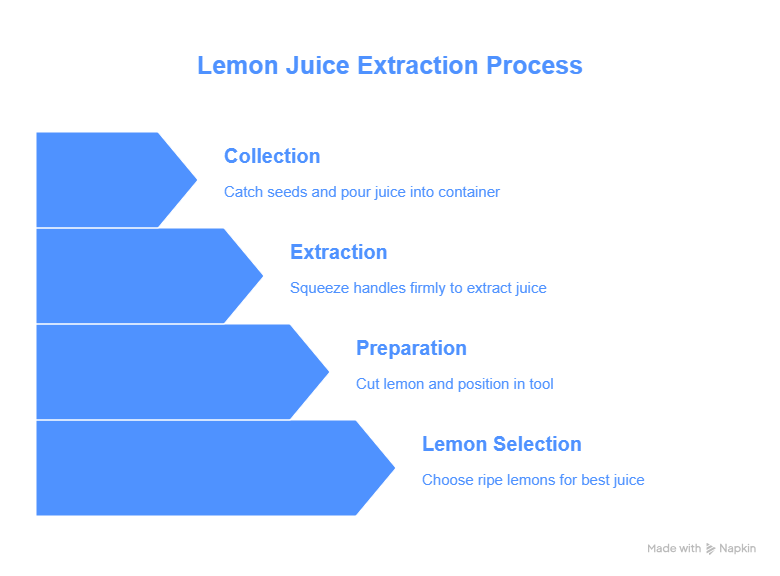
In this document, we will learn How to Use a Lemon Juice Tool Effectively and explore the effective use of a lemon juice tool, a handy kitchen gadget designed to extract juice from lemons and other citrus fruits with ease. Whether you’re a seasoned chef or a home cook, understanding how to use this tool can enhance your culinary experience, making it easier to incorporate fresh lemon juice into your recipes. We will cover the steps for using the tool, tips for maximizing juice extraction, and maintenance advice to keep your tool in top condition.
6 Essential Tools for Juicing Oranges you must know!
Steps for Using a Lemon Juice Tool
- Select a Ripe Lemon: Choose a lemon that is firm yet slightly soft to the touch. This indicates that it is ripe and full of juice.
- Cut the Lemon: Depending on the type of lemon juice tool you have (manual press, reamer, or squeezer), cut the lemon in half or into quarters. If using a reamer, cutting it in half is usually sufficient.
- Position the Lemon: Place the cut side of the lemon facing down onto the juicing surface of the tool. Ensure it is securely positioned to avoid slipping during extraction.
- Apply Pressure: If using a manual squeezer, close the handles together firmly to extract the juice. For a reamer, twist the tool into the lemon while applying downward pressure to release the juice.
- Collect the Juice: Allow the juice to flow into the designated container. If your tool has a built-in strainer, it will catch any seeds or pulp, ensuring you get pure juice.
- Repeat as Necessary: If your recipe calls for more juice, repeat the process with additional lemons.
Tips for Maximizing Juice Extraction
- Roll the Lemon: Before cutting, roll the lemon on the countertop with your palm. This helps to break down the internal membranes, making it easier to extract juice.
- Warm the Lemon: If the lemon is cold, microwave it for about 10-15 seconds to warm it slightly. This can help release more juice.
- Use Fresh Lemons: Always opt for fresh lemons instead of bottled juice for the best flavor and nutritional benefits.
Maintenance of Your Lemon Juice Tool
- Clean Immediately: After use, rinse your lemon juice tool under warm water to remove any residue. This prevents the buildup of juice and pulp that can affect performance.
- Use Mild Detergent: If necessary, use a mild dish soap and a soft sponge to clean the tool thoroughly. Avoid abrasive materials that can scratch the surface.
- Dry Properly: Ensure the tool is completely dry before storing it to prevent rust or mold, especially if it is made of metal.
By following these guidelines to use a lemon juice tool effectively, you can effectively use a lemon juice tool to enhance your cooking and baking endeavors. Enjoy the fresh, zesty flavor that lemon juice brings to your dishes!
This article sparked your curiosity? Fuel it further by checking out our other pieces like 8 Must-Have Features in a Lemon Juice Tool, packed with actionable advice and engaging content.